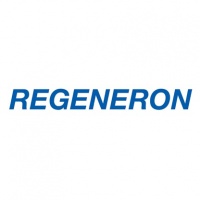Regeneron (REGN) Announces FDA Accepts Evinacumab BLA for Priority Review as Treatment for Patients with HoFH

Regeneron Pharmaceuticals, Inc. (NASDAQ: REGN) today announced that the U.S. Food and Drug Administration (FDA) has accepted for Priority Review a Biologics License Application (BLA) for evinacumab as an adjunct to other lipid-lowering therapies in patients with homozygous familial hypercholesterolemia (HoFH). Evinacumab is the first investigational medicine of its kind to show efficacy in patients with HoFH – including patients with little to no low-density lipoprotein (LDL) receptor function – by binding to and blocking the function of angiopoietin-like 3 (ANGPTL3).
The target action date for the FDA decision is February 11, 2021. The FDA granted evinacumab Breakthrough Therapy designation in 2017 for the treatment of hypercholesterolemia in patients with HoFH.
HoFH is an ultra-rare inherited disease that affects approximately 1,300 patients in the U.S. Patients with HoFH have severely elevated levels of bad cholesterol (low-density lipoprotein cholesterol, or LDL-C), which increases their risk for premature atherosclerotic disease and cardiac events as early as their teenage years. Treatment guidelines recommend early and intensive LDL-C lowering, but patients with HoFH are less responsive (or unresponsive) to standard lipid-lowering therapies, including statins and PCSK9 (proprotein convertase subtilisin/kexin type 9) inhibitors.
The BLA was supported by a pivotal Phase 3 trial evaluating the efficacy and safety of evinacumab in patients with HoFH. Results from this trial were presented as a late-breaking presentation at the American College of Cardiology's Annual Scientific Session together with World Congress of Cardiology (ACC.20) in March 2020.
Previous research published in NEJM in 2017 by the Regeneron Genetics Center found that patients with loss-of-function mutations in their ANGPTL3 gene have significantly lower levels of key blood lipids, including LDL-C. By blocking the ANGPTL3 protein, evinacumab was designed to replicate this loss-of-function mutation effect to lower LDL-C in patients with HoFH.
Regulatory submissions for evinacumab are also progressing in the European Union. In June 2020, the European Medicines Agency's Committee for Medicinal Products for Human Use (CHMP) recommended an accelerated assessment for evinacumab based on the high unmet medical need and therapeutic innovation demonstrated by the product. The safety and efficacy of evinacumab have not been fully evaluated by any regulatory authority.
About evinacumab and the ELIPSE HoFH TrialRegeneron invented evinacumab using the company's VelocImmune® technology, a proprietary genetically-engineered mouse platform endowed with a genetically-humanized immune system to produce optimized fully-human monoclonal antibodies. VelocImmune technology has been used to create multiple FDA-approved antibodies including Praluent® (alirocumab), Dupixent® (dupilumab), Libtayo® (cemiplimab-rwlc) and Kevzara® (sarilumab). Regeneron previously used these technologies to rapidly develop a treatment for Ebola virus infection, which is currently under review by the FDA, and is now being used in efforts to create prophylactic and treatment medicines for COVID-19.
Evinacumab is an investigational fully-human monoclonal antibody that binds to and blocks the function of ANGPTL3 and is currently being studied in patients with HoFH (ongoing Phase 3 extension trial), refractory hypercholesterolemia (Phase 2) and severe hypertriglyceridemia (Phase 2).
ELIPSE (Evinacumab LIPid StudiEs) HoFH was a multi-national Phase 3 randomized, double-blind, placebo-controlled, parallel-group trial evaluating the efficacy and safety of evinacumab 15 mg/kg administered intravenously every four weeks in 65 patients aged 12 years or older with HoFH (43 evinacumab, 22 placebo). The primary endpoint was reduction of LDL-C from baseline with evinacumab compared to placebo at 24 weeks.
